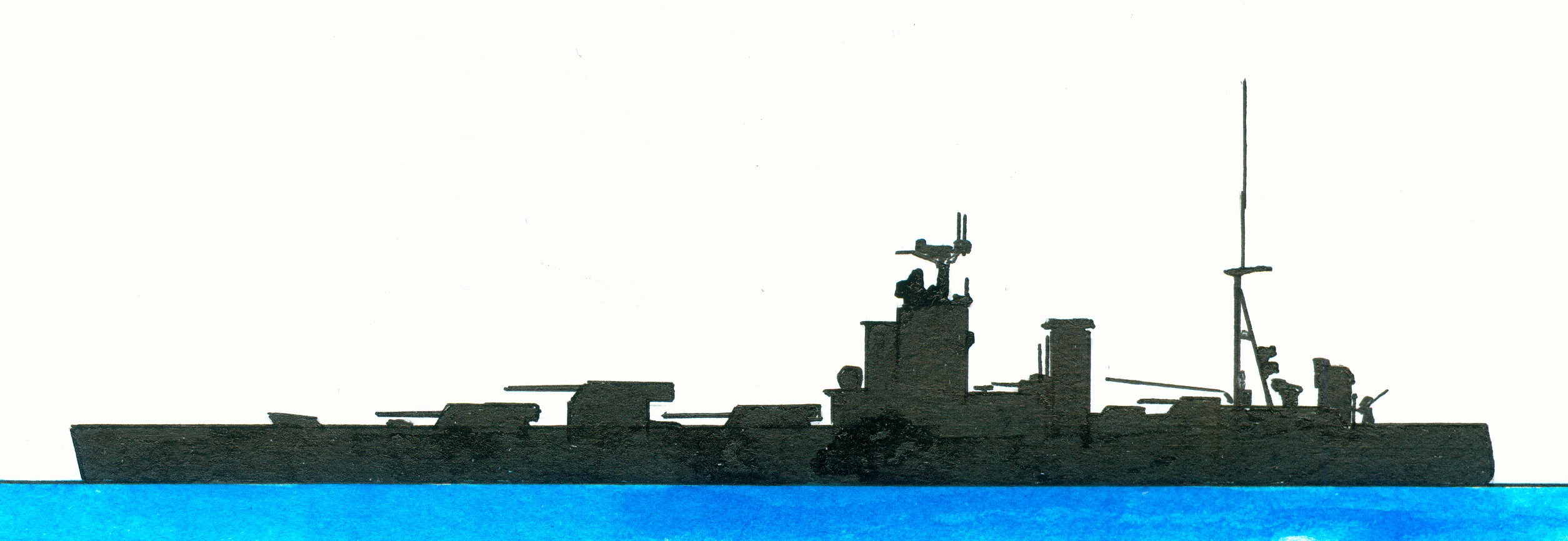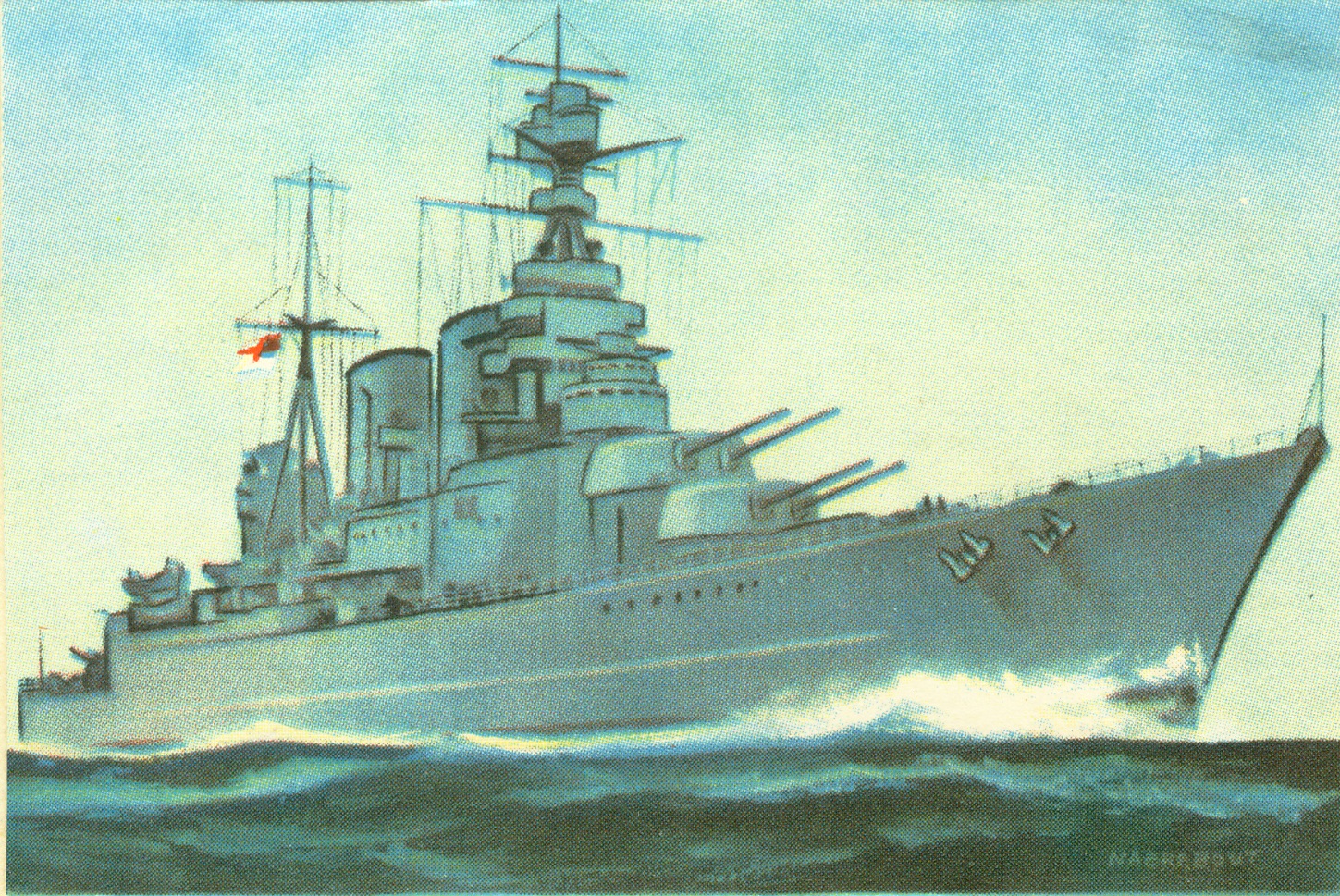HMS Rodney and Nelson
HMS Hood
Drawing made by G.J. Frans Naerebout and published in Op de Lange Deining written by G.A.J. Bovens
HMS Repulse
Library of Congress LC-B2- 4991-13 [P&P] LOT 11258. Original link
HMS Warspite
An item dated London, England 15th referred to a statement of the British Admiralty that a senior officer of the Atlantic Fleet reported that the decreased wages caused commotion under the lower ranks on board of the ships. He proposed to cancel the fleet manoeuvres and call back the ships. Furthermore he proposed to examine what the effects were of the decreased wages and that the Admiralty consider what to do with results. A second item supplied the name of the senior officer which was rear admiral Wilfred Tomkinson (1), in April 1931 appointed as commander in chief of the battle cruiser squadron. Commander-in-chief of the Atlantic Fleet admiral Sir Michael Hodges (2) was absent with sick leave. The manoeuvres had to start on the 22nd in the North Sea testing the latest tactics. Part of the fleet were the battleships and battle cruisers Nelson (3), Rodney (4), Hood (5), Repulse (6) and Warspite.(7)
Notes
1. Alfred Tomkinson (15 November 1877-7 October 1971), served in the Royal British Navy 1891-1942, finally in the rank of vice-admiral, commanded temporarily the Atlantic Fleet when the Invergordon Mutiny broken out. Accused of being too lenient with the mutineers was he placed on half pay and in in 1935 he retired to be called back in the first years of the Second World War.
2. Sir Michael Henry Hodges (29 September 1874-3 November 1951), admiral, served in the Royal British Navy between 1887-1932 (retired and called back for the Second World War and retiring again in 1945. In 1930 appointed as commander-in-chief of the Atlantic Fleet.
3. Of the Nelson-class with as sister ship Rodney. Pennant 28. A simplified design of the G3 battle cruisers which was cancelled by the British Royal navy as a result of the Washing Naval Treaty of 1922. She was too able to compete with the USS Colorado and the Japanese Nagato battleship classes. Sister ship HMS Rodney. Her building was ordered in 1922, laid down on 28 December at Armstrong-Whitworth, Newcastle launched on 3 September 1925, commissioned on 15 August 1927, 1941-11942 extensively repairs needed as a result of an Italian torpedo, decommissioned in February 1948 and on 15 March a year begun her breaking up.
4. Of the Nelson-class with as sister ship the HMS Nelson, preceded by the never realized N3-class and the realized Revenge-class and succeeded by the King George V-class. Building ordered in 1922, laid down at Cammell Laird, Birkenhead, England on 28 December 1922, launched on 17 December 1925, sponsored by Princess Mary, completed in August 1927, commissioned on 10 November 1927, involved in the battle with the German battleship Bismarck 26-27 May 1941. decommissioned in 1946, stricken in 1947 and started at Inverkeithing, Scotland her breaking up on 26 March 1948. Building costs 7.617.799 pond sterling. Originally intended to be larger but as result of the Washington Naval Treaty of 1922 was her designed displacement limited to just 35.000 tons.
5. Battle cruiser. Nicknamed Mighty Hood. Pennant 51. Her building at the shipyard of John Brown&Company was ordered on 7 April 1916, laid down on 1 September, launched on 22 August 1918, commissioned on 15 May 1920 as world largest warship, sunk on 24 May 1941 during her battle with the German battleship Bismarck.
6. Battle cruiser of the Renown-class, originally designed as a Revenge-class battleship. Laid down by John Brown and Company, Clydebank, Scotland on 25 January 1915, launched on 8 January 1916, commissioned on 18 August 1916 and sunk by Japanese aircraft off Kuantan, South Chinese Sea on 10 December 1941.
7. Consisted of the Queen Elizabeth, Malaya, Warspite, Valiant, Barham, Malaya and the in 1914 cancelled Agincourt. Preceded by the Iron Duke-class and succeeded by the Revenge-class. Pennant 03. Laid down at the HMD Dockyard Devonport, England on 31 October 1912, launched on 26 November 1913, commissioned on 8 March 1915, modernized in 1924 and March 1934-March 1937, decommissioned on 1 February 1945,while underway to be broken up run aground at Prussian Cove around 19 April 1947. Efforts to salvage her in 1950 were not successful and after she was finally beached off St. Michael’s Mount {Marazion, England] and there broken up.




